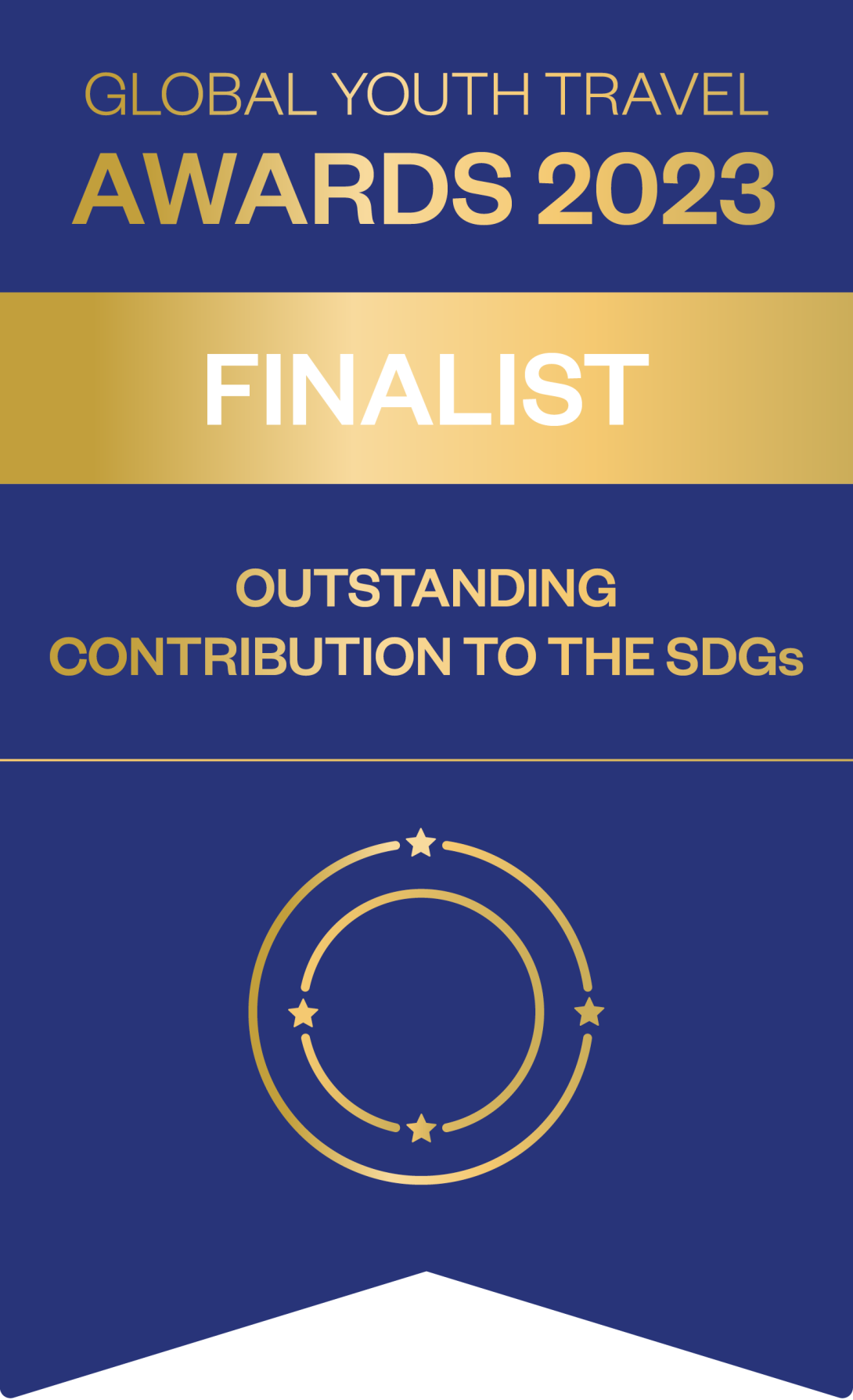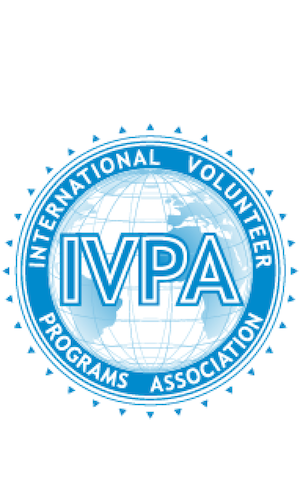Here at Projects Abroad we love to share the stories of our volunteers. Read below to see part two of Sara's year long adventure. Or if you've missed it, check out part one here. She travelled with Projects Abroad for almost an entire year in 2019 and 2020. Sara joined a variety of projects in Mexico, Peru, Sri Lanka, Thailand and Cambodia!
Adiós Mexico
My six weeks in Guadalajara was complete and it was time to take the three flights and a boat ride to reach Taricaya Eco Reserve in the Peruvian rainforest and Project Number 2. I left Lesli and Guera with some sadness and trepidation, although a couple of years younger than me, she had become my “go-to-person” and Mum.
The journey was the usual waiting, flying, eating, tiring time that I actually enjoy. My flight to Lima left at midnight and we were woken around 3.00am for fizzy drinks and crisps! Landed around 6.00am with a couple of hours to wait before leaving for Puerto Maldonado.
Seeing the Andes rolling green beneath me created a frisson of excitement in my stomach and I wanted to share it with someone but had to make do with my own thoughts. We landed on a dusty airstrip and walked across the tarmac to a single storey arrivals lounge. One luggage belt and a partition wall to divide the room into departures as well.
A warm welcome

Elvira was there to meet me full of smiles and welcome, she handed me a packed lunch and suggested I sit in the shade as we had to wait for two other flights to come in, bringing more volunteers. Cleia and Becky duly arrived and we made our way to the river to find our boat. What amounted to a glorified dug out, lined with orange life jackets and a tin roof greeted us.
Feeling ill prepared and suburban, I began dragging my suitcase, designed for European travel rather than Peruvian mud banks, as best I could towards the boat. A bare-footed sturdy man came to my rescue lifting my case with ease onto his muscled shoulders. I was later to find out that he is well into his 70’s and not as able as he once was!
With no Government support the people of Peru have to rely on family and their own wits to provide for themselves. And this man had wisely negotiated a trust contract with our Project to act as porter each time the boat required assistance. As volunteers were arriving and departing daily and a food and supplies shop was required weekly, he was kept fairly busy.

Cleia and Becky were already friends, both studying sciences in the UK, we settled into the boat and they plugged into their playlists as we began gently pottering along the river towards Taricaya. Taricaya is approximately 500 hectares of dense rainforest and all along the river banks are similar plots managed by Eco hotels, farmers, local villagers and environmentalists. On this first trip I could only see vegetation, the odd boat pulled up onto the mud and small paths dug into the river banks. It takes a few trips to actually see the buildings that lay back in the undergrowth. After an hour or so Diego cut the engine and steered our boat towards a flight of wooden steps. At the top a wooden archway with Taricaya engraved into the signboard – we had arrived!
There is something about Peruvian craftsmanship, their small stature or lack of measuring tools which create the comical but frustrating step heights in their staircases – either very short or so big I had to climb onto my knees to pull myself up. After this inelegant arrival we were met by a crowd of smiling expectant faces.
A large grassed area surrounded by outbuildings is the focal point of the Reserve and where we spent our leisure time. Amongst the trees, stilted wood cabins each with a large open veranda were to be home for the next 12 weeks. Inside a mosquito net canopied bed, rudimentary shelving, a shower, basin and flushing toilet – perfect. I didn’t really become aware there was no glass in the windows until a storm brewed and my curtains flapped at 90 degrees as an icy blast blew through the cabin. There is constant noise, the wind blowing the trees, bird song, crickets, whistles, cracks and creaks as the forest continues its day. Monkeys running through the branches, mosquitoes and when I went to investigate leaves rustling under my steps, a huge tortoise.
Unlike England, where the light gently reduces into night; darkness suddenly occurs - it was 6.30 and time for supper. A little early for me at home but with lights out at 9.00pm – ideal. The routine took a little while to accustom to but we were working with nature so our timetable did too. 5.00am the next morning my veranda light went on and I could hear the buzz of the generator, my first day had begun.

Time to work
Each evening Rachel or Sam wrote up the board detailing jobs to be done and the people allocated to them. The animals had to be fed in the morning and afternoon and their cages cleaned, fruit had to be gathered, trails cleared, data recorded for birds, bats and amphibians, plus a family of spider monkeys, recently released, to be kept fed in the forest.
Each job sounded simple enough but, in the heat, and humidity was extremely exhausting until fitness levels raised. The forest floor is covered in tree roots which trip the unaware, the whole place is alive with insects, birds and butterflies but it is not the colourful scene I was expecting. It is a huge expanse of different greens with the occasional bright spot of a butterfly or flower. The forest environment is something one grows into and it is only as the days pass that I begin to notice the life around me.
You hear “things” all the time but to spot and identify takes time. Daily our knowledge and strength grew and even when I was startled to discover a huge tarantula on the wall of my cabin was able to walk away without screaming the place down. It turned out to be the slowest and gentlest of all the tarantulas – a pink toed something - and it gave the local boys something to laugh about.

Taricaya was named after the local yellow spotted river turtle and as an eco-reserve attempting to save at least some of them, an apt title.
The main work at the reserve was to rehabilitate spider monkeys back into the rainforest. Their numbers had declined to near extinction in this particular part of Peru due to adult females being shot for food. Some of the young monkeys brought to the reserve had been rescued from domestic settings once they became unmanageable as pets. Looking after wild animals is a matter of respect and at all times one has to be vigilant.
I wasn’t quite so forgiving of the blasted mosquitoes who managed to maul and gnarl their way through thick socks and Deet spray. So, by the end of the day, hot, sweaty and exhausted, riddled with bites, a freezing cold shower just about finished me off. Although even that you get used to and even relish – perhaps not the mosquitoes though, I was always irritated by those. We even tried to forgive them by finding a reason for their existence, and of course they are an important part of the food chain.
Sam, our resident primatologist took me for my first walk into the rainforest, he showed me trees and plants explaining their life cycles and the animals that depended on them. We were surrounded by ironwood, kapok and strangler trees, walking palms and ferns, we crossed over, what in the wet season would be swamps, via crude, low bridges made from metal sheeting, following the trail markers that directed our path.
When following someone who knows the forest it seems easy, left to my own devices I found everything looked the same, and had no clue in which direction I was heading. Although it would have taken me a very long time to find the camp, I didn’t think I could actually be lost, but thankfully that was never put to the test.

Life in the Reserve followed a fluid pattern with everyone allocated daily tasks, sometimes we started before dawn and walked to the Canopy Platform, reached by a metal scaffolding type staircase reminiscent of a fire escape which led to a long sloping rope bridge that linked the tower stairs to the top of the tallest tree in the canopy at the height of 40 metres. A breath-taking view across the tops of the trees to the Madre de Dios river and onwards to Bolivia in one direction and to the distant reaches of Peru in the others.
At different times on our watches we saw groups of macaws, red streaks flashing past and sitting in the branches faraway, toucans, parakeets and a huge bird of prey. I am not an ornithologist but those of us that are, grabbed Dictionaries of Birds to identify the species we saw and then the serious business of recording the data – species, date, time and number - took place. It was thrilling and unnerving all at the same time, I wanted to just watch what was around me but knew that the whole point of us being there was to record what we saw.
The Peruvian Government closely monitors the activities of the rainforest, granting licence to environmentalists who wish to research the animal and plant inhabitants. Some years ago, finding that spider monkey numbers were decreasing at an alarming rate, Taricaya and the adjoining reserve, Kawsay Biological Station, developed what have become very successful rehabilitation programmes. Both Reserves train scientific and veterinary interns to continue the work, and part of the university degree programme is for the students to experience care of wildlife, therefore there is a constant source of eager participants. In fact, most of the volunteers at Taricaya were studying sciences in one form or another and were an extraordinary group of knowledgeable young people. One boy had loved beetles since he was a child and was frequently stopping along the trails as he spotted something that required further investigation.

As the years passed Taricaya became known as a place that any animal could find refuge and they had taken on three spectacled bears, Lucha, Cholita and Dominga, all rescued, either from badly run zoos, or circuses where they had been maltreated. None of them would survive in the wild but seem content with their new separate living quarters.
When I was at Taricaya, there were a family of howler monkeys, three groups of spider monkeys and four or five youngsters yet to be introduced to a group and a family of woolly monkeys, five cages of wild cats including two jaguarundi, a margay, an ocelot and a puma; a wild dog called Kira, a pair of curassows, Teo the tapir, a huge pen of Taricaya turtles and ten or so red macaws. Chewy a young macaw raised from a fledgling and two other mature macaws were free, along with Grey and Rafa two over-friendly toucan all of whom chose to remain at the Reserve, however hard we tried to encourage them otherwise.

Every Wednesday a couple of the staff took the boat to Puerto Maldonado to purchase food and fuel for the generator. They returned to the Reserve at 5.00pm where a shout went up at their arrival, every volunteer, intern and staff member lined up along the stairs in readiness for unloading. Heavy sacks of fruits, vegetables and rice were hauled hand on hand to be loaded onto wheelbarrows. The most succulent and varied selection always went to the right hand side where it was removed to the animal kitchen – cabbage, carrots, beetroots, apples, guava, melons, oranges, papaya, pineapple, seeds, meats. The humans were well fed too but not such a varied diet as we mainly survived on rice and vegetables, tofu or meat.
Our projects were many and varied and one of the most rewarding was Bird Banding. Rachel, Taricaya’s manager, is an ornithologist and she has been collating data of the rainforest and its wildlife for the Peruvian Environment Agency for many years. She runs the project with enthusiasm, experience and immense patience as her “helpers” are volunteers, most of whom are unused to handling birds or recording data.
We would get up around 5.00am to put up the mist nets – light aluminium poles holding 3 metres or so of fine, soft mesh net. Several of them would be put up along the routes the birds used, over the trails, between the river and the forest, and around the farms. If I remember correctly, we recorded seven different locations for one day each week. The nets would be checked and data recorded every 30-60 minutes. It is quite a laborious task but equally rewarding and fascinating. We saw many woodcreepers, band-tailed manakins, spine tails and hummingbirds - noting their feather growth, leg and beak length, gender and sexual maturity, releasing them again as quickly as possible.
Creatures of the night
We were then lucky enough to meet Hugo Zamora Meza, - “The Bat Man of Peru”; such a kind, knowledgeable man, passionate about bats and their preservation, he spends hours watching and recording them and ensuring their habitats remain safe. As with bird banding, the bats have to be caught in the mist nets and data carefully recorded. This we did in the pitch dark with only small torches to light our way – the forest is a very different place in the dark. Rustles, creaks and squeaks are loud and menacing until you find what is making them, often little frogs or small insects. But we knew a pair of puma were not so very far from camp and the darkness heightens the reality of where you are.

Stuart, one of the co-founders of Taricaya and Conservation Director for Projects Abroad joined us most weeks. One of his many interests and areas of expertise are the local caiman. He gave us a talk on the different species of the Madre de Dios and then took us out in the boat for us to see for ourselves. Searchlight sweeping the banks, hundreds of eyes glowing back in the darkness. Caiman eyes reflect orange, whereas birds and deer are red and cats, green. There are four species living locally – black, dwarf, spectacled and smooth skinned. The black are the largest and rarely seen these days having been over-hunted for their skins. They can reach up to 7metres long if left alone. The smallest at 1 - 1.3 metres, and most common, are the dwarf caiman and it was one of those that Stuart managed to grab out of the water for us to see.
Although I was in Peru during the summer months and the dry season, we still experienced sudden weather changes. The temperatures could drop from mid 30’s to mid-teens bringing a cold, sharp wind. A sudden 20 degree drop and the rush to find warm clothes is a shock, piling on blankets at night and sleeping in socks and jumpers seems ludicrous, but it was really necessary. Without glazing there is no getting away from the wind, but as quickly as it arrives it is gone, and a couple of days later bright blue skies return with hot sun.
Turtles

By early July we had collected and sifted many huge bags of sand to prepare an artificial beach in readiness for the Turtle Project. Percy another phenomenal Peruvian, eyes like lasers and a sixth sense of where turtles were to be found, was our guide and mentor. My Spanish had not improved and he spoke little English so communication resorted to thumbs up, pointing and smiling but it worked.
One night he took a few of us out in the boat to monitor the sandbanks and test the temperature of the sand. The moon was full and the night warm, we moored the boat by dragging it up the sandbank and went in search of the tell-tale signs of turtle footprints. No luck this time.
During the day, Percy took the boat and a few volunteers to count the number of turtles we could see on the river banks. We had to be seen by the local poachers to be patrolling our waters, as a local delicacy is turtle eggs. The Peruvians, like many developing nations, have to live on their wits and create income where they can, so daily boats furnished with cold boxes would be cruising along the river taking recently caught fish, bananas or timber to sell at the market. They even set up illegal gold panning boats to see if they can glean small chips of gold brought down river from the mountains during the rainy season. Anything and everything is worth a try.
The turtle census continued with Percy and a few volunteers each day trying to count the number of turtles sitting out on the river banks and tree branches. It was to give us a rough idea how many nests we were likely to find and if adult numbers were changing in any way. However, trying to spot brown turtles sitting on brown branches at 30 metres was not as easy as it sounds.

We waited patiently for the weather to warm the sand to perfect turtle conditions and a few days later the first footprints culminating in the tell-tale swirly circle were seen. Great excitement, but no nest. It seems to be a very exact science with the female frequently assessing the sand temperature and then digging a precise depth hole for her eggs to be laid. The first eggs to be laid, at the deepest and coolest point of the nest, will be males; the temperature determines the developing gender. Each female will lay up to 30 eggs and it will take up to 5 months before they hatch and this is where as a conservation project, we came in.
Once the females started laying their eggs a group of us camped overnight on the sandbanks to prevent the eggs being stolen, then during daylight hours, carefully removed the eggs noting the depth and placement of each one. The eggs were then re-nested in our artificial beach on the Reserve.
Alongside this we had a research project of 150 young turtles living on the Reserve. Each one had to be weighed and measured and later we were able to release them into the river.
Leisure Time
Puerto Maldonado is the capital city of the Madre de Dios region and the nearest town to Taricaya, so the weekends saw a boat load of volunteers leaving for a little RnR and the all important WiFi connection. We were busy and tired most of the week involved in keeping the animals and forest cared for, but weekends were definite blow-out times. Connecting with family and friends even sweeter. It really was one extreme to the other, zero screen time to full on, plus the odd beer or two!
The city with the feel of a town, is large and sprawls inland, the river having flooded the lower reaches a few years before. The spacious Plaza de Armas is surrounded by restaurants and bars and each weekend a festival or marching band performed, the streets alive with families enjoying the markets and entertainment.
The first four weekends I went, I chose to stay at the Wasai Hotel, revelling in the luxury of hot showers, a la carte restaurant and the swimming pool - but it was surprising how quickly I wanted to be back at Taricaya. The other volunteers stayed cheaply and, as I was to discover later, very comfortably, in hostel rooms or super cheaply in dormitories. I was never quite brave enough to join them at the night club despite invitations to do so.
Reflecting on Taricaya
There were two or three weeks where a few older volunteers joined us, even so I think I was still the oldest. Having a wider spread of ages created more balance in the group and it was lovely to meet parents travelling with their children and experiencing real adventure together. I had become accustomed to being “the elder statesman” in the group and noticed some of the younger ones gravitating towards me more and more.
It is tough being away from everything that is normal in your life and being thrown together with a large group of unknown people. Some of the kids were obviously used to a boarding school life and jumped in quickly and happily, establishing their role in the group. Others, particularly the lovely girls from Japan and the big school group from China, were a little more reticent. As most of the group were speaking English as a second language, and I have to say very competently indeed, we all needed to be aware of our cultural differences. There were highs and lows, love affairs and falling outs, but generally a happy constantly changing group of people. Some stayed for weeks others a month or two.
Taricaya is certainly a place of contrasts and self-discovery and this little diary entry sums up how I felt almost daily:
'Jungle life is a delicate balance swinging negatively down as the humidity rises and the bugs bite, the equipment is almost medieval and the simplest task takes forever. Then just as you are about to have a hissy fit from hell, a beautiful butterfly lands nearby or squawking macaws fly overhead and the marvel of nature spirals your heart into joy. This is an extraordinary experience, the feeling of peace mixed with frustration, awe, the changing subtle way the forest sheds leaves, flowers bloom and new things are seen each day. It is quite wonderful."
However, my twelve weeks in Taricaya were drawing to a close. I met this with mixed feelings, I was tired, tired of the constant flow of people, the humidity and the general state of feeling I was camping out. But the rhythm of the jungle, the wonderful bird song, the camaraderie of the group would all be missed.
My next stop was Sri Lanka and I knew I was going to a coastal town about 30kms from Colombo. I looked on Google maps to see my host family lived quite near the beach, so I began to imagine teaching school in the mornings and strolling on the sand in the afternoons, all of which sounded very appealing.
This is a personal account of one volunteer’s experience on the project and is a snapshot in time. Your experience may be different, as our projects are constantly adapting to local needs and building on accomplishments. Seasonal weather changes can also have a big impact. To find out more about what you can expect from this project we encourage you to speak to one of our friendly staff.
Our accreditations


















